Is Business Process Management (BPM) Ready for Ambidexterity? Conceptualization, Implementation Guidelines and Research Agenda
Abstract
1. Introduction
2. Theoretical Background
2.1. Organizational Ambidexterity
2.2. From Business Process Management (BPM) to BPM Ambidexterity
3. Methodology
- (1)
- How to adapt existing BPM practices to make them more explorative.
- (2)
- How to balance explorative and exploitative BPM.
- (3)
- What organizational changes (i.e., structure, culture) need to take place, in order to facilitate BPM ambidexterity?
4. Results
4.1. Findings for SLR-Q1 (General Background)
4.1.1. Evolution of Papers per Year, and Their Type
4.1.2. Research Methods
4.1.3. Research Centers—Geographic Distribution
4.2. Findings for SLR-Q2 (Conceptualization)
- The first research streams views ambidexterity as the balance between explorative and exploitative processes. This stream focuses on ambidexterity defined as the balancing act of opposing activities of exploration and exploitation [P40]. In the context of BPM ambidexterity, it primarily means researching explorative BPM, and identifying strategies to resolve the tension between exploration and exploitation, through structural or contextual strategies. In this context, BPM ambidexterity is defined as a managed balance equilibrium between exploratory and exploitative processes [P08].
- On the other hand, we identified papers that look at ambidexterity as an organizational capability, supported by BPM. This second research stream is based on conceptualizing both ambidexterity and BPM, as an organizational capability (see Section 2.2). In this context, BPM ambidexterity is defined as a dynamic capability, manifested through routines and practices, leading to and supported by process exploitation and exploration [P20]. The papers in this stream focus on providing strategies to grow this capability through various organizational enablers, as well as the broader concept of business-IT alignment.
4.2.1. Ambidexterity as a Balance between Explorative and Exploitative Processes
- Structural ambidexterity for providing temporal (sequential) or spatial (structural) separation between exploitation and exploration;
- Contextual ambidexterity for managing exploration and exploitation in one entity and timeframe.
4.2.2. Ambidexterity as a Capability, Supported by BPM
4.3. Findings for SLR-Q3 (BPM Ambidexterity Aspects)
4.3.1. Process Modelling (=14 Papers)
4.3.2. Process Deployment (=2 Papers)
4.3.3. Process Optimization (=18 Papers)
4.3.4. Process Management (=41 Papers)
4.3.5. Process-Oriented Culture (=4 Papers)
4.3.6. Process-Oriented Structure (=5 Papers)
4.4. Findings for SLR-Q4 (Practical Guidelines)
4.4.1. Adapting Existing BPM Practices towards Explorative Ones
- (1)
- the actual ideation, either structured around the Design Thinking techniques [P24, P25, P31, P54] or explicitly unstructured in the context of ‘bricolage’ or ‘improvisation’ [P18, P53]. Alternatively, the ideation could also be supported through the “Business Process Design Space” [P67, P70];
- (2)
- the results of the ideation which should follow rapid iterations and customer-focused experimentations, based on Agile principles [P24]; and finally
- (3)
- activities delivering integration (‘convergence’) of the business opportunities into the organizational context [P62, P67, P68].
4.4.2. Balancing Explorative and Exploitative BPM
- Structural: with a focus on separating structurally the explorative processes, from the exploitative ones. This provided an isolated environment to run explorative processes, such as for example the A2BP method [P31]. Most researchers nevertheless agreed, that structural approaches faced several limitations (siloes, lower integration of innovation, cultural barriers etc.) [P20];
- Contextual: with a focus on integrating explorative and exploitative processes, as for example in the “Triple Diamond Model” [P62, P67, P68].
4.4.3. Organizational Capabilities to Facilitate BPM Ambidexterity
- Culture and leadership: at the core BPM ambidexterity is instilling a culture of creativity, flexibility, experimentation and risk taking [P13, P15]. Our sample revealed five guidelines on how to achieve this: (1) involvement and a joint understanding (common language) of employees in order to support enablement [P39], (2) management focusing on facilitating communications and openness in knowledge management to grow the organization’s social capital [P55], (3) creating a learning culture and “learning to learn” [P42], (4) adopting an “ambivalent leadership style” integrating and alternating the contractual setting with the visionary and “unconventional” ones [P44], and (5) relying less on performance metrics, which according to [P8} support incremental innovation, rather than radical one. Interestingly [P11] claimed that Western cultures might have greater difficulty adopting contextual ambidexterity than Eastern cultures, as the Western approach is built on “polarized either-or thinking”, and a lower tolerance of contradictions and paradoxes.
- Role of technology: [P10, P12] and [P32] hypothesized that various IT-related and BPM-related managerial capabilities, as well as their learning behavior will support the growth of BPM ambidexterity in an organization. The role of IT as an enabler of BPM ambidexterity (i.e., in the context of team processes) was reinforced in [P23] through the simultaneous support of process standardization and process agility. [P27] and [P37] also added the big data dimension, as an enabler of BPM ambidexterity, through the use of data to improve internal process, as well as increase client orientation and adaptation to market changes. Similarly, [P34] highlighted the role of mobile technology, in support of BPM ambidexterity. On the other hand, digital transformation (i.e., in particular assets digitalization, digitally based process integration; and disruptive decision-making through analytics) may resolve the exploration–exploitation tension in the context of BPM [P38], by nurturing innovative, exploratory thinking.
5. Discussion
5.1. On the Importance of BPM Ambidexterity
5.2. Managerial Guidelines
5.3. Research Agenda
- In our study, we proposed to outline decision steps for deciding on BPM ambidexterity implementation (Figure 11). Nevertheless, there are significant research gaps on: (1) the contingency factors for pursuing structural or contextual ambidexterity; and (2) guidance on integrating exploitative and exploratory BPM activities in a contextual setting. These two research avenues will be critical in providing practitioners with the appropriate toolset for implementing BPM ambidexterity in a given organization.
- Looking through the structural lens, there are only few frameworks for exploratory BPM, and there is little evidence for their effectiveness. Consequently, further elaboration on this topic will bring significant benefits for practitioners. A promising avenue for future research is the further integration of concepts from digital innovation with BPM [P66].
- Another major research gap relates to the cultural and structural settings of BPM ambidexterity. As argued by [27], the organizational context plays a critical role in successful BPM implementations. The findings in the literature are not only incomplete, but also to some extent contradictory: the researchers cannot agree if and how BPM can support an exploration culture [P13, P15]. Additionally, from practitioners’ point of view guidance for instilling an appropriate BPM culture will be of significant value. Furthermore, the underlying mechanisms of the paradox perspective on OA [P45] will have to be further investigated to confirm if and how exploitative and explorative processes reinforce each other.
- In the context of digitization, the growth of digital platforms is seen as a critical enabler, and the topic of inter-organizational BPM ambidexterity [P17] will provide promising avenues for future research.
- Finally, the intersection of BPM ambidexterity and sustainability has not been previously explored in academia, and provides interesting avenues of research, within the trends of digital transformation and the green transition. Nonetheless, operational excellence is key.
5.4. Limitations of the Study
6. Conclusions
Author Contributions
Funding
Institutional Review Board Statement
Informed Consent Statement
Data Availability Statement
Conflicts of Interest
Appendix A. Literature Sample (N = 71)
| P01 | Benner, M. J., and Tushman, M. L. (2003). Exploration, exploitation and process management: The productivity dilemma revisited. Academy of Management Journal, 28(2), 238–256. https://doi.org/10.2307/3094913 |
| P02 | Tarafdar, M., and Gordon, S. R. (2007). Understanding the influence of information systems competencies on process innovation: A resource-based view. Journal of Strategic Information Systems, 16(4), 353–392. https://doi.org/10.1016/j.jsis.2007.09.001 |
| P03 | Siha, S. M., and Saad, G. H. (2008). Business process improvement: Empirical assessment and extensions. Business Process Management Journal, 14(6), 778–802. https://doi.org/10.1108/14637150810915973 |
| P04 | Ling, H., Zhao, F., and Wang, Y. (2009). Impact of Synergy Between IT and Business Process on Organizational Performance: a Perspective of Ambidexterity Theory. In PACIS 2009 Proceedings (Vol. 116). Retrieved from http://aisel.aisnet.org/pacis2009/116 |
| P05 | de Visser, M., de Weerd-Nederhof, P., Faems, D., Song, M., Van Looy, B., and Visscher, K. (2010). Structural ambidexterity in NPD processes: A firm-level assessment of the impact of differentiated structures on innovation performance. Technovation, 30(5–6), 291–299. https://doi.org/10.1016/j.technovation.2009.09.008 |
| P06 | Lee, G., DeLone, W. H., and Espinosa, J. A. (2010). The main and interaction effects of process rigor, process standardization, and process agility on system performance in distributed IS development: An ambidexterity perspective. In ICIS—International Conference on Information Systems (p. Paper 34). Retrieved from http://aisel.aisnet.org/icis2010_submissions/34/ |
| P07 | Melnyk, S. A., Hanson, J. D., and Calantone, R. J. (2010). Hitting the target…but missing the point: Resolving the paradox of strategic transition. Long Range Planning, 43(4), 555–574. https://doi.org/10.1016/j.lrp.2009.11.004 |
| P08 | Luebbe, A., Weske, M. (2011). Bringing Design Thinking to Business Process. In: Plattner, H., Meinel, C., and Leifer, L. (2011). Design Thinking Understand—Improve—Apply. Retrieved from http://www.springer.com/series/8802 |
| P09 | Moreno Luzon, M. D., and Valls Pasola, J. (2011). Ambidexterity and total quality management: towards a research agenda. Management Decision, 49(6), 927–947. https://doi.org/10.1108/00251741111143612 |
| P10 | Xie, R., Ling, H., Zhang, C., Rong, X., Hong, L., and Cheng, Z. (2011). Effect of business process management on firm performance: An ambidexterity perspective. Business Management and Electronic Information (BMEI), 2011 International Conference On, 3, 341–345. https://doi.org/10.1109/ICBMEI.2011.5920464 |
| P11 | Backstrom, T. (2012). Incremental and radical innovation from a complex system theory perspective. In ISMOT 2012: proceedings of the 2012 IEEE International Symposium on Management of Technology: 8–9 November 2012, Hangzhou, Zheijiang, China. |
| P12 | Xie, R., Ling, H., Sun, Y., and Zhang, C. (2013). Towards the Ambidexterity of Service Processes: Implications for the Managing of IT Usage and Organization Learning. In WHICEB 2013 Proceedings. 6. Retrieved from http://aisel.aisnet.org/whiceb2013/6/ |
| P13 | Berente, N., and Lee, J. (2014). How process improvement efforts can drive organisational innovativeness. Technology Analysis and Strategic Management, 26(4), 417–433. https://doi.org/10.1080/09537325.2013.851376 |
| P14 | Kohlborn, T., Mueller, O., Poeppelbuss, J., and Roeglinger, M. (2014). Interview with Michael Rosemann on ambidextrous business process management. Business Process Management Journal, 20(4), 634–638. https://doi.org/10.1108/BPMJ-02-2014-0010 |
| P15 | Moreno Luzon, M. D., Gil Marques, M., and Arteaga, F. (2014). Driving organisational ambidexterity through process management. The key role of cultural change. Total Quality Management and Business Excellence, 25(9–10), 1026–1038. https://doi.org/10.1080/14783363.2013.776768 |
| P16 | Heckmann, C. (2015). The Impact of Business Process IT Ambidexterity on Business Process Performance. In ECIS 2015 Research- in-Progress Papers (pp. 0–12). Retrieved from http://aisel.aisnet.org/ecis2015_riphttp://aisel.aisnet.org/ecis2015_rip/23 |
| P17 | Lavikka, R., Smeds, R., and Jaatinen, M. (2015). A process for building inter-organizational contextual ambidexterity. Business Process Management Journal, 21(5), 1140–1161. https://doi.org/10.1108/BPMJ-12-2013-0153 |
| P18 | Le Loarne, S., and Maalaoui, A. (2015). How high-tech entrepreneurs bricole the evolution of business process management for their activities. Business Process Management Journal, 21(1). https://doi.org/10.1108/BPMJ-03-2014-0024ï |
| P19 | Matthews, R. L., Tan, K. H., and Marzec, P. E. (2015). Organisational ambidexterity within process improvement: An exploratory study of four project-oriented firms. Journal of Manufacturing Technology Management, 26(4), 458–476. https://doi.org/10.1108/JMTM-12-2013-0184 |
| P20 | Ng, S. C. H., Rungtusanatham, J. M., Zhao, X., and Lee, T. S. (2015). Examining process management via the lens of exploitation and exploration: Reconceptualization and scale development. International Journal of Production Economics, 163, 1–15. https://doi.org/10.1016/j.ijpe.2015.01.021 |
| P21 | Afflerbach, P., and Frank, L. (2016). Customer Experience Versus Process Efficiency: Towards an Analytical Framework About Ambidextrous BPM. In 37th International Conference on Information Systems (ICIS) (Vol. 4801, pp. 1–21). |
| P22 | Heckmann, C., Hsu, J. S.-C., and Mädche, A. (2016). IT ambidexterity—conceptualization at the business process level. 24th European Conference on Information Systems, ECIS 2016. |
| P23 | Kwak, C., Lee, J., and Lee, H. (2016). Effects of information technology on team innovation and inter-team coordination: An exploratory investigation of process ambidexterity. In Proceedings of the Annual Hawaii International Conference on System Sciences (Vol. 2016-March, pp. 5309–5318). https://doi.org/10.1109/HICSS.2016.656 |
| P24 | Rösel, A. (2016). Are we ready for disruptive innovation. In: Kuhrmann, M., Münch, J., Richardson, I., Rausch, A., and Zhang, H. (2016). Managing Software Process Evolution: Traditional, Agile and Beyond—How to Handle Process Change. Springer International Publishing AG Switzerland. Retrieved from https://link.springer.com/content/pdf/10.1007%2F978-3-319-31545-4.pdf |
| P25 | Van Den Bergh, J., Işik, Ö., Viaene, S., and Helsen, E. (2016). Re-Positioning Business Process Management—Exploring Key Capabilities for Successful Business Transformation. BPTrends. Retrieved from www.bptrends.com |
| P26 | Bala, H., Massey, A. P., and Montoya, M. M. (2017). The Effects of Process Orientations on Collaboration Technology Use and Outcomes in Product Development. Journal of Management Information Systems, 34(2), 520–559. https://doi.org/10.1080/07421222.2017.1334494 |
| P27 | Dezi, L., Santoro, G., Gabteni, H., and Pellicelli, A. C. (2017). The role of big data in shaping ambidextrous business process management. Business Process Management Journal. https://doi.org/10.1108/BPMJ-07-2017-0215 |
| P28 | Fleischman, A.; Schmidt, W.; Stary, C. (2017). Overcoming the Innovator’s Dilemma in Disruptive Process Innovation Through Subject Orientation. In: Kurosu, M. (2017). Human–Computer Interaction User Interface Design, Development and Multimodality. Lecture Notes in Computer Science (including subseries Lecture Notes in Artificial Intelligence and Lecture Notes in Bioinformatics) (Vol. 10271). https://doi.org/10.1007/978-3-319-58071-5_16 |
| P29 | Kim, Y. (2017). The effect of process management on different types of innovations: An analytical modeling approach. European Journal of Operational Research, 262(2), 771–779. https://doi.org/10.1016/j.ejor.2017.03.064 |
| P30 | Ohlsson, J., Han, S., and Bouwman, H. (2017). The prioritization and categorization method (PCM) process evaluation at Ericsson: a case study. Business Process Management Journal, 23(2), 377–398. https://doi.org/10.1108/BPMJ-07-2016-0136 |
| P31 | Santos, H., and Alves, C. (2018). Exploring the Ambidextrous Analysis of Business Processes: A Design Science. In ICEIS 2017 (pp. 543–566). Springer International Publishing. https://doi.org/10.1007/978-3-319-93375-7 |
| P32 | Ardito, L., Besson, E., Petruzzelli, A. M., and Gregori, G. L. (2018). The influence of production, IT, and logistics process innovations on ambidexterity performance. Business Process Management Journal. https://doi.org/10.1108/BPMJ-11-2017-0306 |
| P33 | Baiyere, A., Tapanainen, T., and Salmela, H. (2018). Digital Transformation-Role of Agility in Business Processes. In Twenty-fourth Americas Conference on Information Systems, New Orleans, 2018. Retrieved from https://aisel.aisnet.org/cgi/viewcontent.cgi?article=1287&context=amcis2018 |
| P34 | Choudhary, P., Mital, M., Pani, A. K., Papa, A., and Vicentini, F. (2018). Impact of enterprise mobile system implementation on organizational ambidexterity mediated through BPM customizability. Business Process Management Journal. https://doi.org/10.1108/BPMJ-07-2017-0209 |
| P35 | Fain, N., Wagner, B., and Kay, N. (2018). Driving innovation through ambidextrous service provision—long life cycle products in manufacturing contexts. Technological Forecasting and Social Change, 130(April 2017), 3–13. https://doi.org/10.1016/j.techfore.2017.05.013 |
| P36 | Ferraris, A., Monge, F., and Mueller, J. (2018). Ambidextrous IT capabilities and business process performance: an empirical analysis. Business Process Management Journal. https://doi.org/10.1108/BPMJ-07-2017-0201 |
| P37 | Festa, G., Safraou, I., Cuomo, M. T., and Ludovico Solima. (2018). Big data for big pharma: Harmonizing business process management to enhance ambidexterity. Business Process Management Journal. https://doi.org/10.1108/BPMJ-10-2017-0272 |
| P38 | Gastaldi, L., Appio, F. P., Corso, M., and Pistorio, A. (2018). Managing the exploration—exploitation paradox in healthcare. Business Process Management Journal. https://doi.org/10.1108/BPMJ-04-2017-0092 |
| P39 | Giacosa, E., Mazzoleni, A., and Usai, A. (2018). Business Process Management (BPM): How complementary BPM capabilities can build an ambidextrous state in business process activities of family firms. Business Process Management Journal. https://doi.org/10.1108/BPMJ-07-2017-0211 |
| P40 | Heckmann, C., and Maedche, A. (2018). IT ambidexterity for business processes: the importance of balance. Business Process Management Journal, 24(4), 862–881. https://doi.org/10.1108/BPMJ-10-2016-0214 |
| P41 | Lenning, J. (2018). Auditing of explorative processes. Total Quality Management and Business Excellence, 29(9–10), 1185–1199. https://doi.org/10.1080/14783363.2018.1487605 |
| P42 | Lindskog, C. (2018). Exploitation and Exploration in Business Process Management-An exploratory paper. In 17th International Conference on Perspectives in Business Informatics Research, Stockholm. Retrieved from http://ceur-ws.org/Vol-2218/paper41.pdf |
| P43 | Luger, J., Raisch, S., and Schimmer, M. (2018). Dynamic Balancing of Exploration and Exploitation: The Contingent Benefits of Ambidexterity. Organization Science, 29(3), 449–470. https://doi.org/10.1287/orsc.2017.1189 |
| P44 | Miglietta, N., Battisti, E., Carayannis, E., and Salvi, A. (2018). Capital structure and business process management: evidence from ambidextrous organizations. Business Process Management Journal, 24(5), 1255–1270. https://doi.org/10.1108/BPMJ-07-2017-0214 |
| P45 | Raisch, S., Hargrave, T. J., and Van De Ven, A. H. (2018). The Learning Spiral: A Process Perspective on Paradox. Journal of Management Studies. https://doi.org/10.1111/joms.12397 |
| P46 | Rialti, R., Marzi, G., Silic, M., and Ciappei, C. (2018). Ambidextrous organization and agility in big data era—the role of business process management systems. Business Process Management Journal. https://doi.org/10.1108/BPMJ-07-2017-0210 |
| P47 | Röglinger, M., Schwindenhammer, L., and Stelzl, K. (2018). How to Put Organizational Ambidexterity into Practice-Towards a Maturity Model. In 16th International Conference on Business Process Management. Retrieved from www.fim-rc.de |
| P48 | Schniederjans, D. G. (2018). Business process innovation on quality and supply chains. Business Process Management Journal, 24(3), 635–651. https://doi.org/10.1108/BPMJ-04-2016-0088 |
| P49 | Sharma, S. O., and Martin, A. (2018). Re-thinking and re-operationalizing product innovation capability: A review, critique and extension of dynamic capability view using theoretical triangulation. European Business Review, 30(4), 374–397. https://doi.org/10.1108/EBR-07-2016-0087 |
| P50 | Tinoco, J. (2018). Innovation Ambidexterity and the Three-Legged Stool: The Value of Business Processes. Graziadio Business Review, 21(1). Retrieved from https://gbr.pepperdine.edu/2018/07/innovation-ambidexterity-and-the-three-legged-stool/ |
| P51 | Asif, M. (2019). Exploring the role of core and infrastructure quality management practices in ambidexterity. Total Quality Management and Business Excellence, 30(9–10), 990–1004. https://doi.org/10.1080/14783363.2017.1344549 |
| P52 | Binci, D., Belisari, S., and Appolloni, A. (2019). BPM and change management An ambidextrous perspective management. Business Process Management Journal. https://doi.org/10.1108/BPMJ-06-2018-0158 |
| P53 | Cunha, M. P. e., Bednarek, R., and Smith, W. (2019). Integrative ambidexterity: one paradoxical mode of learning. Learning Organization, 26(4), 425–437. https://doi.org/10.1108/TLO-02-2019-0038 |
| P54 | Dilan, E., and Aydin, M. N. (2019). An Integrated Framework for Examining Innovation Alignment in Organizations. International Journal of Innovation and Technology Management, 16(4). https://doi.org/10.1142/S0219877019500391 |
| P55 | Dost, M., and Badir, Y. F. (2019). Generation or adoption? The role of social capital. Management Decision, 57(7), 1457–1471. https://doi.org/10.1108/MD-11-2017-1108 |
| P56 | Gieske, H., George, B., Van Meerkerk, I., and Van Buuren, A. (2019). Innovating and optimizing in public organizations: does more become less? Public Management Review. https://doi.org/10.1080/14719037.2019.1588356 |
| P57 | Heracleous, L., Yniguez, C., and Gonzalez, S. A. (2019). Ambidexterity as Historically Embedded Process: Evidence From NASA, 1958 to 2016. Journal of Applied Behavioral Science, 55(2), 161–189. https://doi.org/10.1177/0021886318812122 |
| P58 | Lederer, M., Popova, O., and Schmid, P. (2019). Can you see the wood for the trees? Collection and Compilation of Agility Models for BPM. In S-BPM ONE’19, June 26–28, 2019, Seville, Spain ©. https://doi.org/10.1145/3329007.3329016 |
| P59 | Michelino, F., Cammarano, A., Celone, A., and Caputo, M. (2019). The Linkage between Sustainability and Innovation Performance in IT Hardware Sector. Sustainability, 11(16), 4275. https://doi.org/10.3390/su11164275 |
| P60 | Secchi, R., and Camuffo, A. (2019). Lean implementation failures: The role of organizational ambidexterity. International Journal of Production Economics, 210(May 2017), 145–154. https://doi.org/10.1016/j.ijpe.2019.01.007 |
| P61 | Kwak, C., Lee, J., and Lee, H. (2019). Do teams need both hands? An analysis of team process ambidexterity and the enabling role of information technology. International Journal of Information Management. https://doi.org/10.1016/j.ijinfomgt.2019.11.006 |
| P62 | Grisold, T., Gross, S., Röglinger, M., Stelzl, K., and Brocke, J. (2019). Exploring Explorative BPM—Setting the Ground for Future Related Fields and Agendas. 17th International COnference BPM2019 Vienna, Austria, September 1–6, 2019 Proceedings, 1(11675), 1–9. https://doi.org/10.1007/978-3-030-26619-6 |
| P63 | Tai, J. C. F., Wang, E. T. G., and Wang, K. (2019). A Model of Coaligned Digital Innovations: The Roles of Flexible IT Infrastructure and Ambidextrous IS Process Innovations. Retrieved from http://www.pacis2019.org/wd/Submissions/PACIS2019_paper_463.pdf |
| P64 | Badakhshan, P., Conboy, K., Grisold, T., and vom Brocke, J. (2019). Agile business process management: A systematic literature review and an integrated framework. Business Process Management Journal, 26(6), 1505–1523. https://doi.org/10.1108/BPMJ-12-2018-0347 |
| P65 | Gross, S., Malinova, M., and Mendling, J. (2019). Navigating Through the Maze of Business Process Change Methods. In Proceedings of the 52nd Hawaii International Conference on System Sciences. https://doi.org/10.24251/hicss.2019.754 |
| P66 | Mendling, J., and Recker, J. (2020). Building a Complementary Agenda for Business Process Management and Digital Innovation. European Journal for Information Systems. Retrieved from https://www.researchgate.net/profile/Jan_Recker/publication/340528277_Building_a_Complementary_Agenda_for_Business_Process_Management_and_Digital_Innovation/links/5e8ef63a299bf1307989f40c/Building-a-Complementary-Agenda-for-Business-Process-Management-and |
| P67 | Stelz, K. (2020). Organizational Ambidexterity—Exploring and Exploiting the Role of Business Process and Project Portfolio Management. |
| P68 | Grisold, T. (2020). Teaching the Five-Diamond Method for Explorative BPM Class Notes: Teaching the Five-Diamond Method for Explorative BPM. Www.Bptrends.Com |, (November). |
| P69 | Stelzl, K., Röglinger, M., and Wyrtki, K. (2020). Building an ambidextrous organization: a maturity model for organizational ambidexterity. Business Research. https://doi.org/10.1007/s40685-020-00117-x |
| P70 | Gross, S., Stelzl, K., Grisold, T., Mendling, J., Röglinger, M., and Brocke, J. vom. (2020). The Business Process Design Space for Exploring Process Redesign Alternatives. Business Process Management Journal. Retrieved from https://epub.wu.ac.at/7830/1/BusinessProcessDesignSpaceforExploringProcessRedesignAlternatives.pdf |
| P71 | Rosemann, M. (2020). Explorative Process Design Patterns. In Proceedings of the International Conference on Business Process Management: BPM2020. Retrieved from https://eprints.qut.edu.au/201691/8/BPM_2020_Revised_Version.pdf |
References
- Sebastian, I.M.; Mocker, M.; Ross, J.W.; Moloney, K.G.; Beath, C.; Fonstad, N.O. How Big Old Companies Navigate Digital Transformation. MIS Q. Exec. 2017, 16, 197–213. [Google Scholar]
- Van Looy, A. On the Synergies between Business Process Management and Digital Innovation; Springer: Cham, Switzerland, 2018; pp. 359–375. [Google Scholar]
- Rosemann, M. Proposals for future BPM research directions. Lect. Notes Bus. Inf. Process 2014, 181, 1–15. [Google Scholar] [CrossRef]
- Couckuyt, D.; Van Looy, A. Green BPM as a business-oriented discipline: A systematic mapping study and research agenda. Sustainability 2019, 11, 4200. [Google Scholar] [CrossRef]
- Stolze, C.; Semmler, G.; Thomas, O. Sustainability in Business Process Management Research—A Literature Review; AMCIS 2012 Proceedings: Seattle, WA, USA, 2012. [Google Scholar]
- Dumas, M.; la Rosa, M. Fundamentals of Business Process Management; Springer: Heidelberg, Germany, 2013. [Google Scholar]
- Benner, M.J.; Tushman, M.L. Exploration, exploitation and process management: The productivity dilemma revisited. Acad. Manag. J. 2003, 28, 238–256. [Google Scholar]
- Schmiedel, T.; Brocke, J.V. Business Process Management: Potentials and Challenges of Driving Innovation; Springer: Cham, Switzerland, 2015; pp. 3–15. [Google Scholar]
- Del Giudice, M.; Soto-Acosta, P.; Carayannis, E.; Scuotto, V. Emerging perspectives on business process management (BPM): IT-based processes and ambidextrous organizations, theory and practice. Bus. Process Manag. J. 2018, 24, 1070–1076. [Google Scholar] [CrossRef]
- Helbin, T.; Van Looy, A. Business process ambidexterity and its impact on business-it alignment. A systematic literature review. In Proceedings of the International Conference on Research Challenges in Information Science, Brussels, Belgium, 29–31 May 2019. [Google Scholar]
- Boell, S.K.; Cecez-Kecmanovic, D. On being ‘systematic’ in literature reviews in IS. J. Inf. Technol. 2015, 30, 161–173. [Google Scholar] [CrossRef]
- O’Reilly, C.A.; Tushman, M.L. Organizational Ambidexterity: Past, Present and Future Academy of Management Perspectives. Acad. Manag. Perspect. 2013, 27, 324–338. [Google Scholar] [CrossRef]
- Lavie, D.; Stettner, U.; Tushman, M.L. Exploration and Exploitation Within and Across Organizations. Acad. Manag. Ann. 2010, 4, 1941–6067. [Google Scholar] [CrossRef]
- Raisch, S.; Birkinshaw, J. Organizational ambidexterity: Antecedents, outcomes, and moderators. J. Manag. 2008, 34, 375–409. [Google Scholar] [CrossRef]
- Gibson, C.; Birkinshaw, J. Antecedents, consequences, and mediating: Role of organizational ambidexterity. Acad. Manag. J. 2004, 47, 209–226. [Google Scholar]
- He, Z.-L.; Wong, P.-K. Exploration vs. Exploitation: An Empirical Test of the Ambidexterity Hypothesis. Organ. Sci. 2004, 15, 481–494. [Google Scholar] [CrossRef]
- Birkinshaw, J. Building ambidexterity into an organization. MIT Sloan Manag. Rev. 2004, 45, 47–55. [Google Scholar]
- Andriopoulos, C.; Lewis, M.W. Exploitation-Exploration Tensions and Organizational Ambidexterity: Managing Paradoxes of Innovation. Organ. Sci. 2009, 20, 686–717. [Google Scholar] [CrossRef]
- Farjoun, M. Contradictions, Dialectics, and Paradoxes. In SAGE Handbook of Process Organization Studies; SAGE Publications Ltd.: London, UK, 2021; pp. 87–109. [Google Scholar]
- March, J.G. Exploration and Exploitation in Organizational Learning. Organ. Sci. 1991, 2, 71–87. [Google Scholar] [CrossRef]
- Cohen, W.M.; Levinthal, D.A. Absorptive Capacity: A New Perspective on Learning and Innovation. Adm. Sci. Q. 1990, 35, 128–152. [Google Scholar] [CrossRef]
- O’Reilly, C.A.; Tushman, M.L. Ambidexterity as a dynamic capability: Resolving the innovator’s dilemma. Res. Organ. Behav. 2008, 28, 185–206. [Google Scholar] [CrossRef]
- Danneels, E. Trying to become a different type of company: Dynamic capability at Smith Corona. Strateg. Manag. J. 2010, 31, 1–43. [Google Scholar] [CrossRef]
- Eisenhardt, K.M.; Martin, J.A. Dynamic capabilities: What are they? Strateg. Manag. J. 2000, 21, 1105–1121. [Google Scholar] [CrossRef]
- Cao, Q.; Gedajlovic, E.; Zhang, H. Unpacking Organizational Ambidexterity: Dimensions, Contingencies, and Synergistic Effects. Organ. Sci. 2009, 20, 781–796. [Google Scholar] [CrossRef]
- Werder, K.; Heckmann, C. Ambidexterity in Information Systems Research: Overview of Conceptualizations, Antecedents, and Outcomes. J. Inf. Technol. Theory Appl. 2019, 20, 28–52. [Google Scholar]
- Van Looy, A.; de Backer, M.; Poels, G. A conceptual framework and classification of capability areas for business process maturity. Enterp. Inf. Syst. 2014, 8, 188–224. [Google Scholar] [CrossRef]
- Ortbach, K.; Plattfaut, R.; Pöppelbuß, J.; Niehaves, B. A dynamic capability-based framework for Business Process Management: Theorizing and empirical application. In Proceedings of the 2012 45th Hawaii International Conference on System Sciences, Maui, HI, USA, 4–7 January 2012; pp. 4287–4296. [Google Scholar]
- Brocke, J.V.; Recker, J.; Trkman, P.; Mertens, W.; Viaene, S. Ten Principles of Good Business Process Management. Bus. Process Manag. J. 2014, 20, 530–548. [Google Scholar] [CrossRef]
- Van Looy, A. A Quantitative Study of the Link Between Business Process Management and Digital Innovation. BPM Forum 2017, 329, 177–192. [Google Scholar]
- Van Looy, A. A quantitative and qualitative study of the link between business process management and digital innovation. Inf. Manag. 2021, 58, 103413. [Google Scholar] [CrossRef]
- Harmon, P. The Scope and Evolution of Business Process Management. In Handbook on Business Process Management 1; Springer: Berlin/Heidelberg, Germany, 2010; pp. 37–81. [Google Scholar]
- Hill, C.W.L.; Rothaermel, F.T. The Performance of Incumbent Firms in the Face of Radical Technological Innovation. Acad. Manag. Rev. 2003, 28, 257–274. [Google Scholar] [CrossRef]
- Mendling, J.; Decker, G.; Germany, S.; Hull, R.; Reijers, H.A. How do Machine Learning, Robotic Process Automation, and Blockchains Affect the Human Factor in Business Process Management? Commun. Assoc. Inf. Syst. 2018, 43, 1–23. [Google Scholar] [CrossRef]
- Benner, M.J.; Tushman, M.L. Process Management and Technological Innovation: A Longitudinal Study of the Photography and Paint Industries. Adm. Sci. Q. 2002, 47, 676–706. [Google Scholar] [CrossRef]
- Kitchenham, B.; Charters, S.; Budgen, D.; Brereton, P. Performing systematic literature reviews in software engineering. In Proceedings of the 28th International Conference on Software Engineering—ICSE ’06, Shanghai, China, 20–28 May 2006. [Google Scholar]
- Okoli, C.; Schabram, K. Working Papers on Information Systems A Guide to Conducting a Systematic Literature Review of Information Systems Research. Work. Pap. Inf. Syst. 2010, 10, 1–47. [Google Scholar]
- Strauss, C.L. The Savage Mind; University of Chicago Press: Chicago, IL, USA, 1962. [Google Scholar]

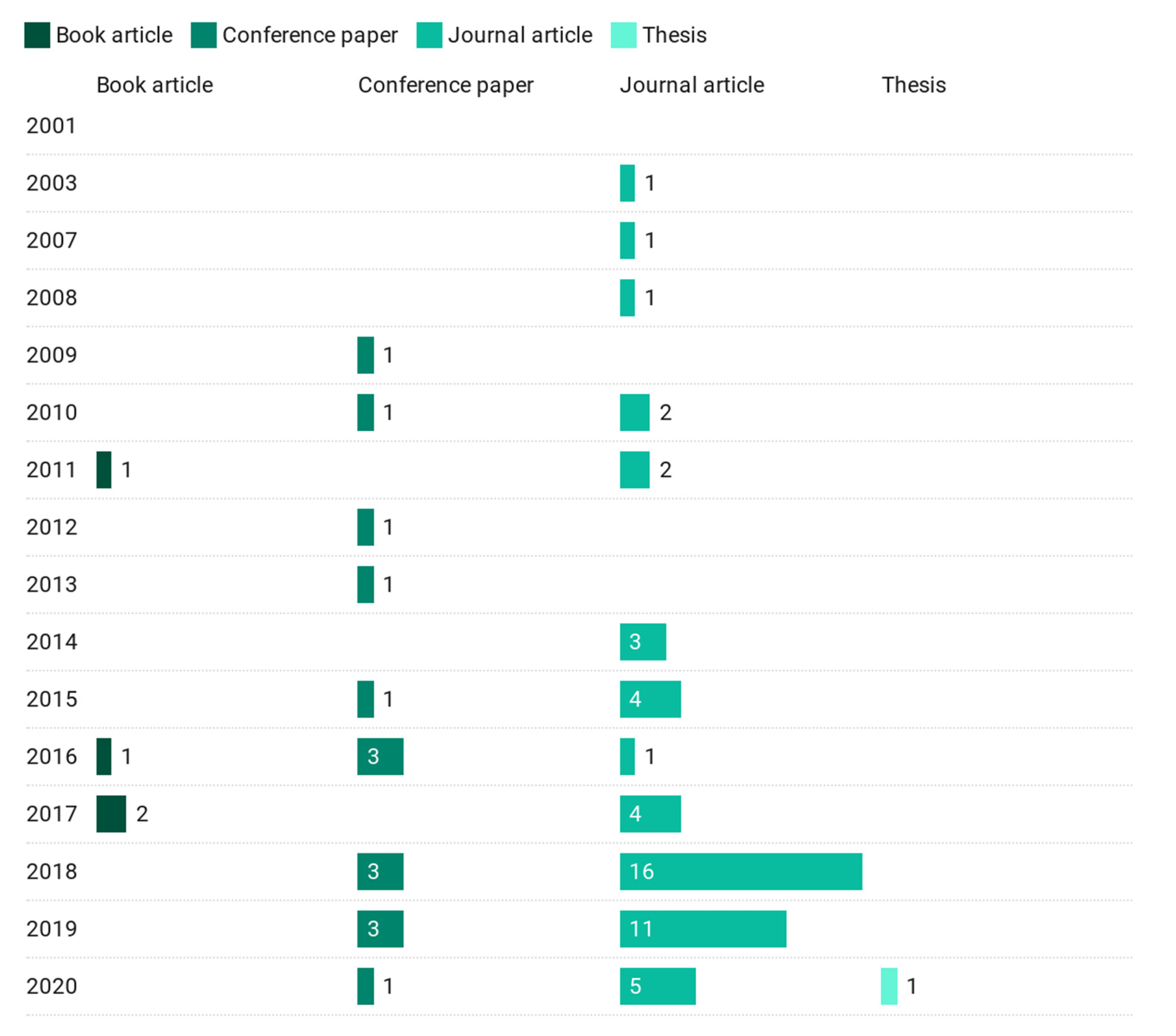

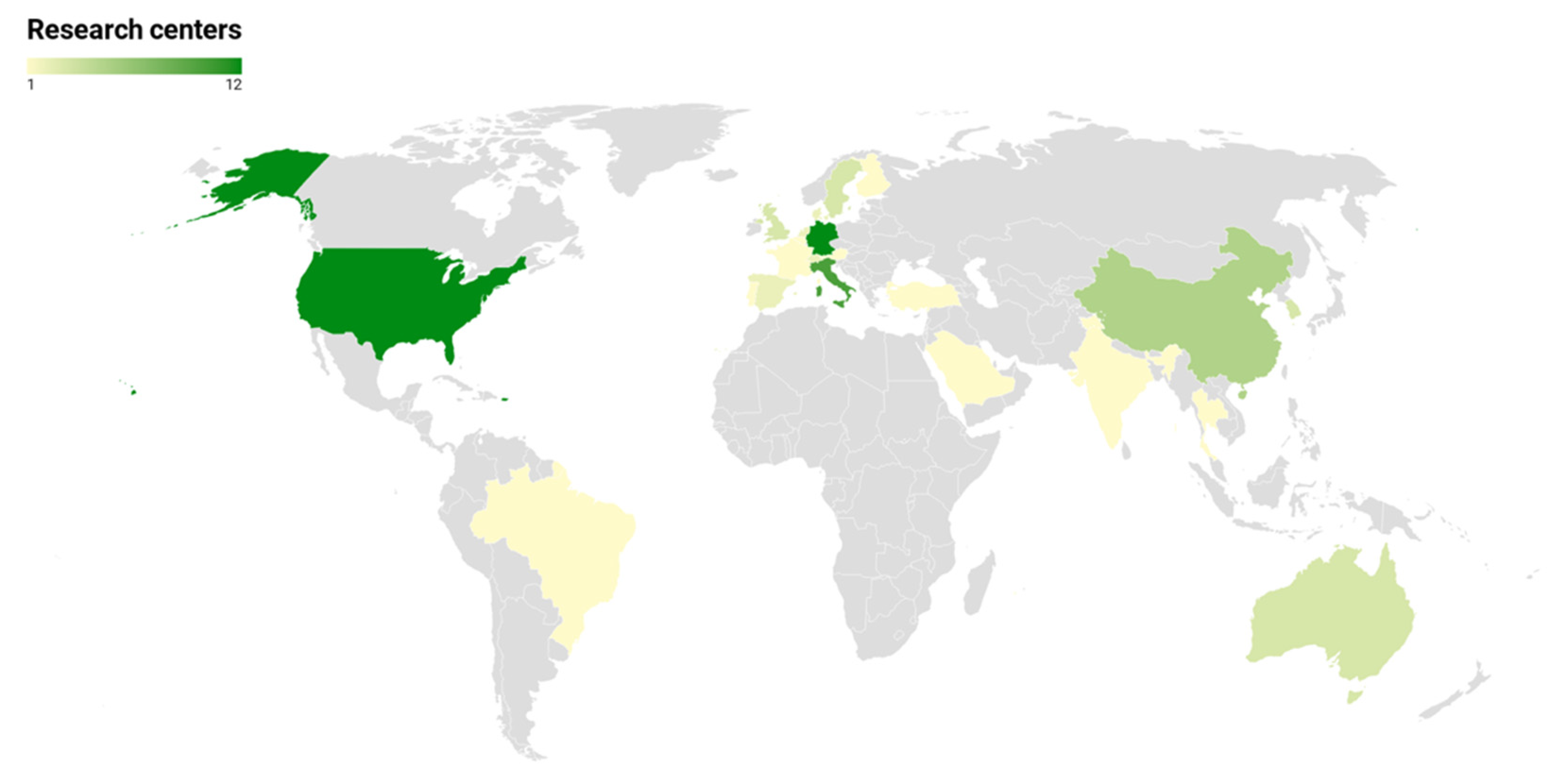
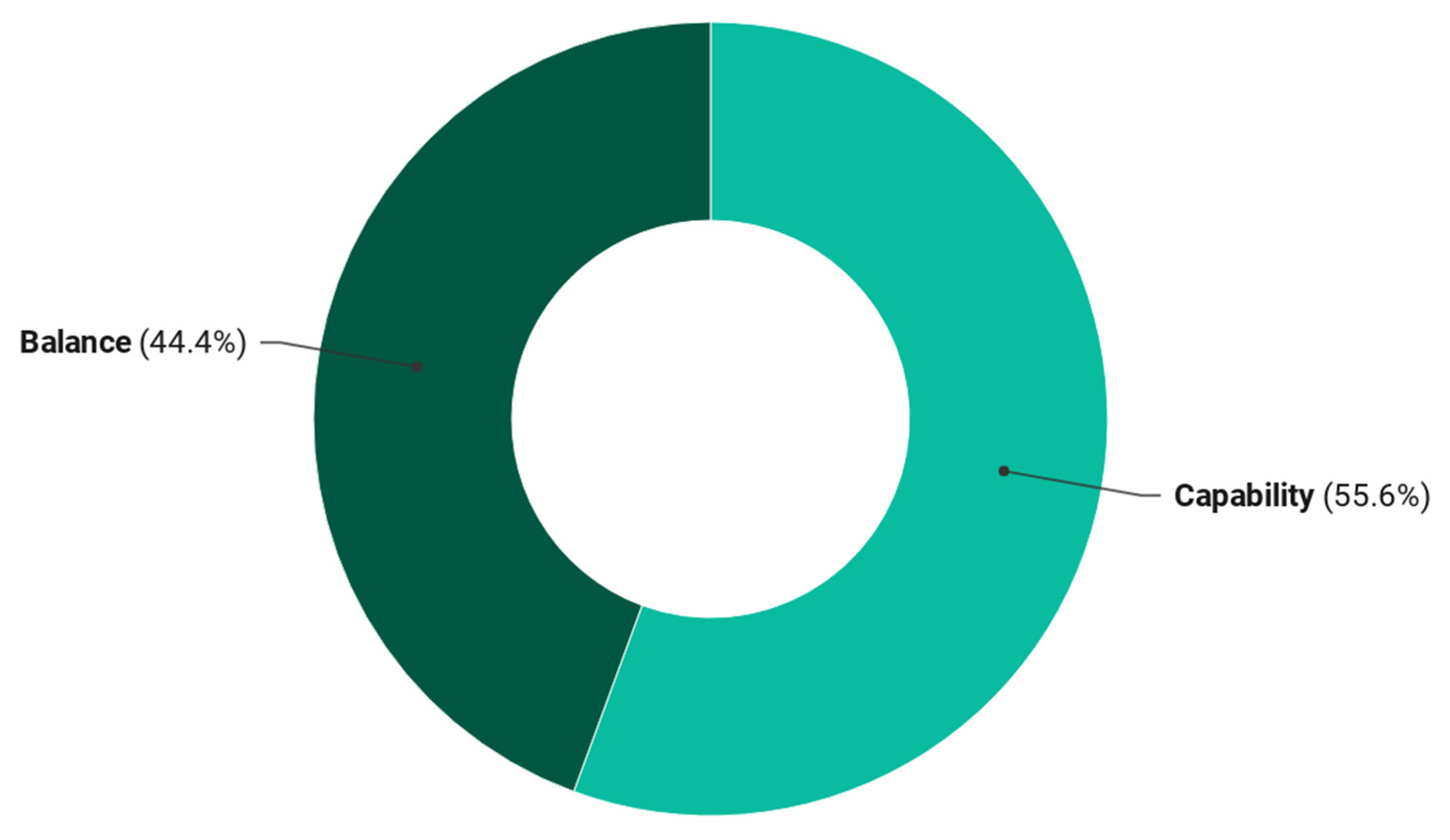
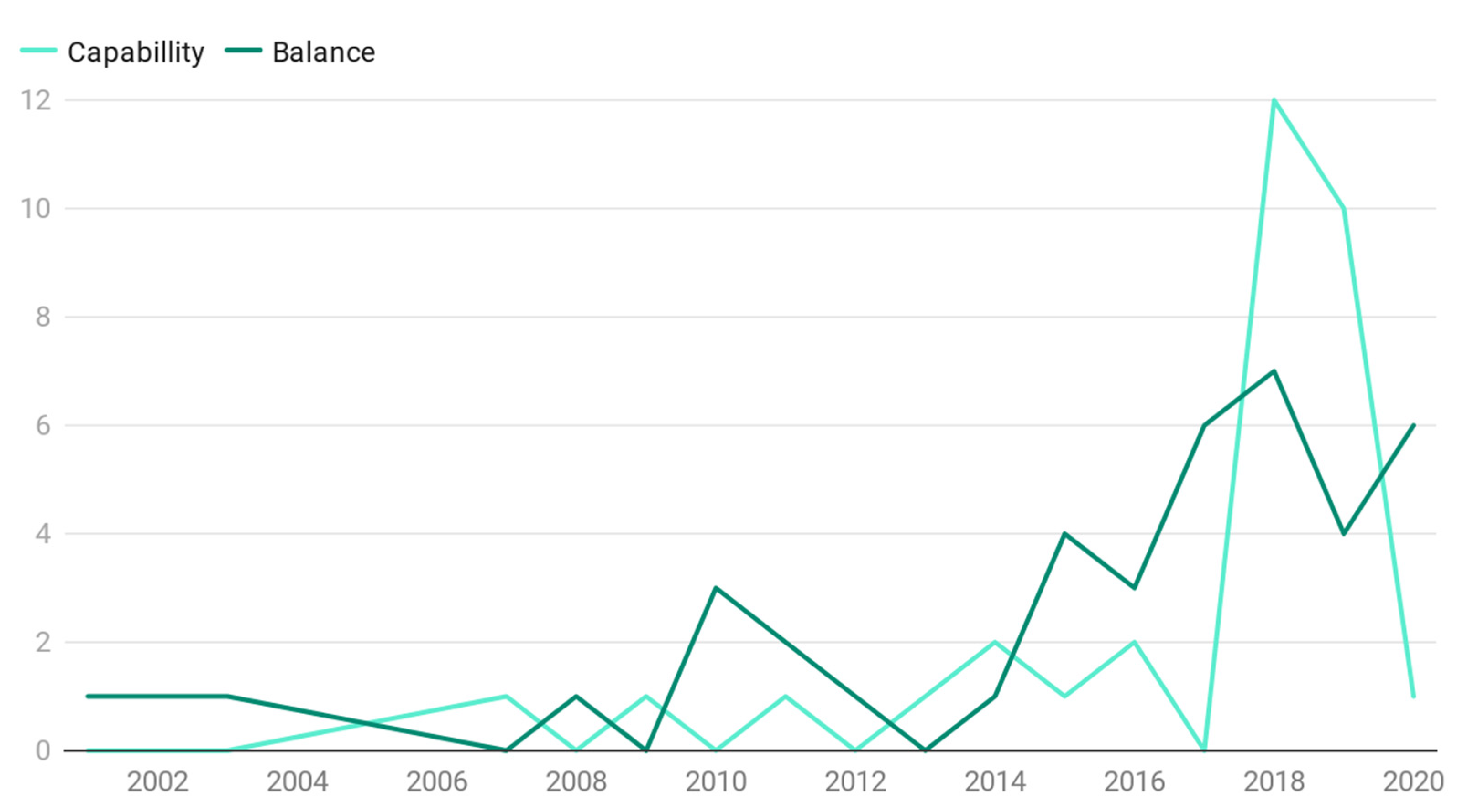

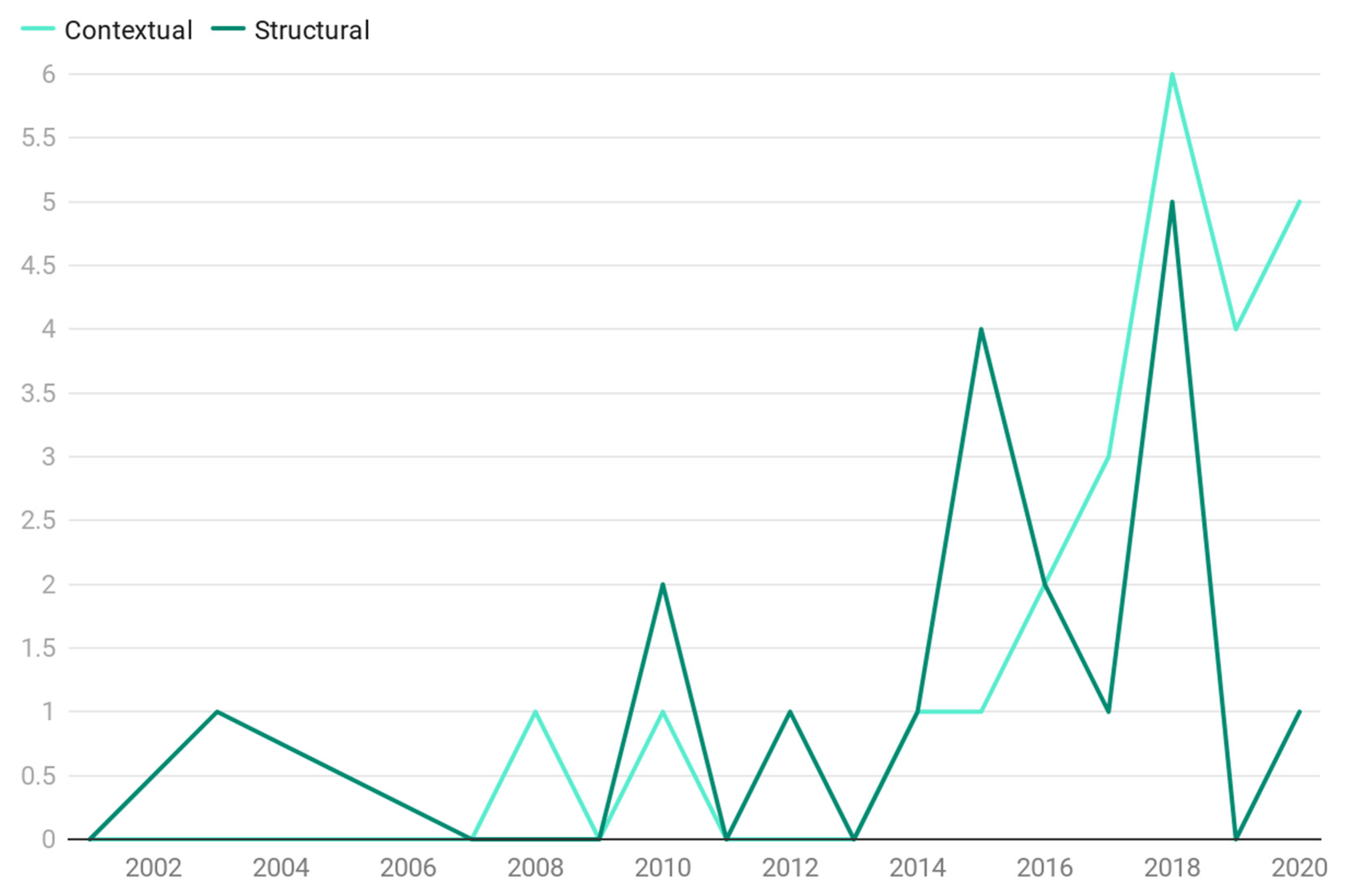

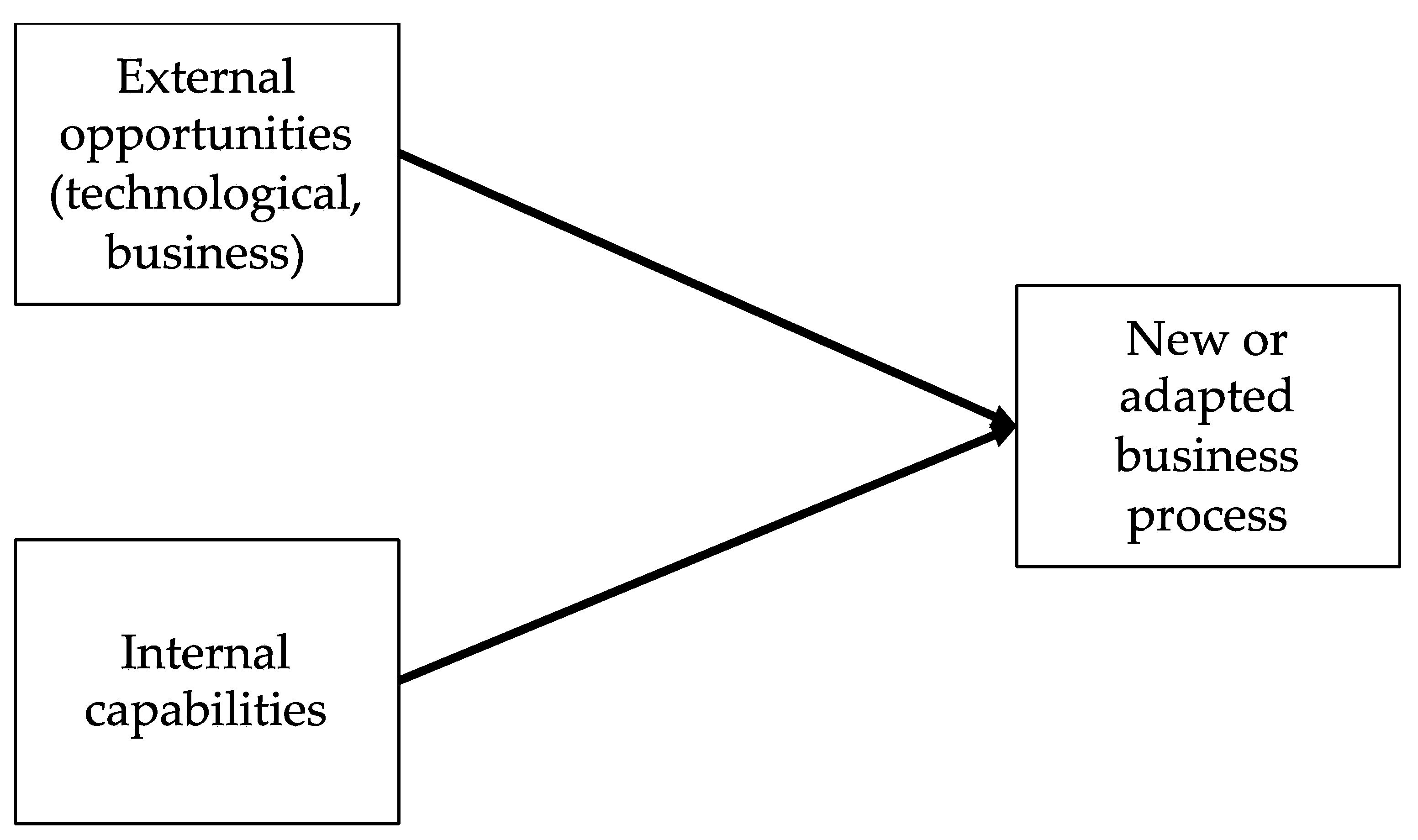

| SLR Protocol Elements | Translated to Our Study |
|---|---|
| 1/Research question | What is the state of research on ambidexterity in the BPM discipline?
|
| 2/Sources searched | The following eight academic, peer-reviewed databases were selected, as they were most relevant in the context of information system research and commonly used in SLRs [37]:
|
| 3/Search terms | The main search terms were covering process ambidexterity, as well as radical innovation, disruption and exploration in the context of BPM. Following several iterations, the following search keywords were combined, as they provided a broad and substantial sample of articles for the study:
|
| 4/Search strategy |
|
| 5/Inclusion criteria |
|
| 6/Exclusion criteria |
|
| 7/Quality criteria |
|
| Ambidexterity as a balance | Structural ambidexterity | P01, P06, P11, P14, P17, P19, P20, P21, P30, P37, P38, P41, P42, P71 |
| Contextual ambidexterity | P03, P05, P07, P18, P24, P25, P27, P28, P31, P33, P35, P37, P38, P42, P58, P62, P65, P66, P67, P68, P70, P71 | |
| Ambidexterity as a capability | Capability growth | P02, P09, P13, P15, P32, P34, P39, P44, P45, P46, P47, P48, P49, P50, P51, P52, P53, P54, P55, P56, P57, P61, P69 |
| Business-IT alignment | P04, P12, P16, P22, P23, P36, P40, P61 |
| Ambidexterity as a balance between explorative and exploitative process |
|
| Ambidexterity as a capability, supported by BPM |
|
| BPM Capability | Exploitation | Exploration | Paper IDs |
|---|---|---|---|
| Process modelling | Focus on execution, pain points. Inside-out design | Focus on change, opportunity points, outside-in approach | P02, P08, P17, P18, P24, P26, P27, P28, P31, P60, P63, P66, P67, P68 |
| Process deployment | N/A | N/A | P40, P76 |
| Process optimization | Process control, incremental process improvement, decreasing the variation | Radical process improvement, increasing the variation | P03, P13, P16, P17, P19, P20, P21, P16, P27, P30, P32, P34, P37, P45, P50, P55, P70, P71 |
| Process management | Process alignment, efficiency, compliance, rigor, standardization, formalization, proceduralization, operational excellence. | Process adaptability, flexibility, experimentation, agility, deviance and customer-centricity | P06, P07, P10, P11, P12, P16, P17, P20, P22, P23, P25, P26, P27, P28, P29, P33, P35, P36, P37, P38, P40, P41, P43, P44, P45, P46, P47, P48, P49, P50, P51, P53, P54, P56, P59, P61, P62, P64, P65, P66, P69 |
| Process-oriented culture | Control, accuracy, discipline, security, improvement, refinement, deeper and more technical awareness of implemented systems and business process specifics | Creativity, flexibility, experimentation, risk taking, broad understanding of the business and market, also an overview of modern technological innovations | P09, P15, P39, P57 |
| Process-oriented structure | “Supply side’’ structure (regular maintenance and upgrades and relatively simple new acquisition); functional structure | “Demand side’’ structure (complex, strategic, innovation oriented and large scale change related), cross-functional structure | P01, P04, P05, P14, P57 |
| Recommendation | Paper IDs |
|---|---|
| Enrich with “Design Thinking” techniques (e.g., the Ambidextrous Analysis of Business Process method) | P08, P24, P25, P31, P42, P54 |
| Add agile and lean concepts to processes | P24, P46, P60, P64 |
| Apply divergent-convergent thinking (e.g., “triple diamond model”) | P45, P62, P67, P68, |
| Adopt the “bricolage concepts” [38], or “improvisation” | P18, P53 |
| Follow new prescriptive models (e.g., questionnaires), advocating specific activities | P20, P21, P30, P50, P70 |
| Adopt selected practices from existing methodologies (BPR, TQM) | P51, P52 |
| Structural exploratory techniques | Design Thinking techniques [P24, P25, P31, P54], Bricolage/Improvisation [P18, P53], Agile approaches [P24, P46, P60, P64] |
| Contextual ambidexterity techniques | “Triple diamond model” [P45, P62, P67, P68], Prioritization and Categorization Method [P30] |
Publisher’s Note: MDPI stays neutral with regard to jurisdictional claims in published maps and institutional affiliations. |
© 2021 by the authors. Licensee MDPI, Basel, Switzerland. This article is an open access article distributed under the terms and conditions of the Creative Commons Attribution (CC BY) license (http://creativecommons.org/licenses/by/4.0/).
Share and Cite
Helbin, T.; Van Looy, A. Is Business Process Management (BPM) Ready for Ambidexterity? Conceptualization, Implementation Guidelines and Research Agenda. Sustainability 2021, 13, 1906. https://doi.org/10.3390/su13041906
Helbin T, Van Looy A. Is Business Process Management (BPM) Ready for Ambidexterity? Conceptualization, Implementation Guidelines and Research Agenda. Sustainability. 2021; 13(4):1906. https://doi.org/10.3390/su13041906
Chicago/Turabian StyleHelbin, Tomasz, and Amy Van Looy. 2021. "Is Business Process Management (BPM) Ready for Ambidexterity? Conceptualization, Implementation Guidelines and Research Agenda" Sustainability 13, no. 4: 1906. https://doi.org/10.3390/su13041906
APA StyleHelbin, T., & Van Looy, A. (2021). Is Business Process Management (BPM) Ready for Ambidexterity? Conceptualization, Implementation Guidelines and Research Agenda. Sustainability, 13(4), 1906. https://doi.org/10.3390/su13041906







